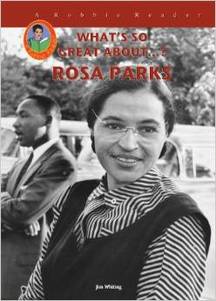 When seamstress Rosa Parks boarded a bus after work in Montgomery, Alabama on December 1, 1955, she had no idea she was about to make history. At that time, Montgomery buses were strictly segregated. According to city law, whites had the right to the first few rows of seats. Under a long-standing custom, blacks had to give up their seats as additional whites boarded. So when that happened, the driver ordered Parks and three other blacks to move further back. The other three did. Parks didn’t. The driver repeated his order. Again Parks refused. She was arrested. Years later, a legend grew up that she was tired from a long day on her feet. But as she explained, “No, the only tired I was, was tired of giving in.” Black leaders, who had long shared her frustration, sensed an opportunity. They quickly formed the Montgomery Improvement Association (MIA) and selected a young minister who had just moved to Montgomery as leader. His name was Dr. Martin Luther King, Jr. Under his leadership, Montgomery blacks ordered a boycott of the bus system. They used many methods of alternate transportation, sometimes walking for an hour or even more. Despite whites’ burning of several churches and an explosion that destroyed Dr. King’s home, they persisted: day after day, week after week, month after month. Since blacks formed about 75 percent of the normal ridership, the loss of their fares began crippling the system. Finally, on December 20 the following year Montgomery repealed the law requiring segregated buses. The victory also catapulted Dr. King to national prominence. Parks didn’t fare so well. She was fired from her job and received numerous death threats. She and her husband moved to Detroit. Honors began pouring in. In 2000, Time magazine named Rosa Parks—often called the “Mother of the Civil Rights Movement”—as one of the 100 most important people of the twentieth century. Parks had another honor that year. In 1994, the white supremacist group Ku Klux Klan had announced a plan to clean up a portion of Highway I-55 near St. Louis, Missouri under the federal Adopt-a-Highway program. That meant signs would be posted to acknowledge the Klan’s “public service.” The Missouri Department of Transportation objected, but a series of court cases concluding in 2000 deemed the objection as unconstitutional. The state quickly responded by naming that portion of I-55 the Rosa Parks Freeway. The Klan never did clean it up. 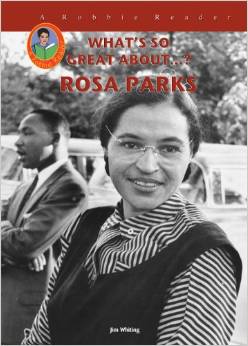 On the morning of December 1, 1955, hardly anyone in Rosa Parks s home town of Montgomery, Alabama had heard of her. By the time that night fell, she was on her way to becoming a household word all over the United States. Jim Whiting tells the story in his book What's So Great About Rosa Parks? For more information, click here. MLA 8 Citation
Whiting, Jim. "The Mother of the Civil Rights Movement." Nonfiction Minute, iNK Think Tank, 26 Feb. 2018, www.nonfictionminute.org/the-nonfiction-minute/ The-Mother-of-the-Civil-Rights-Movement.
0 Comments
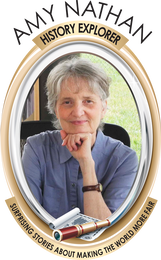 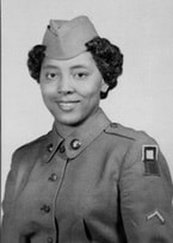 Sarah in her uniform as a member of the Women's Army corps. Courtesy of Sarah Keys Evans Sarah in her uniform as a member of the Women's Army corps. Courtesy of Sarah Keys Evans Rosa Parks is famous for refusing to move to the back of a bus in Montgomery, Alabama, in 1955. Buses were segregated there, with rules that made African Americans sit in the back. However, Rosa Parks wasn’t the first to protest against such unfair bus rules. Others had done so earlier, including Sarah Keys Evans, a young private in the United States Army who made her stand for justice three years before Rosa Parks. In August 1952, Sarah was traveling home to North Carolina from Ft. Dix in New Jersey, where she was stationed. Early that summer morning, she boarded a bus in New Jersey—where buses weren’t segregated—and sat toward the middle of the bus. After midnight, the bus entered Roanoke Rapids, a town in North Carolina. Sarah’s hometown was farther south. A new bus driver took over the bus and ordered her to move to the back. When she didn’t, she was arrested. She had to spend the night in jail and pay a $25 fine the next morning. Police put her on another bus that took her the rest of the way home, forcing her to sit in the back. With the help of a young African American lawyer, Dovey Roundtree, Sarah Keys Evans filed a complaint against the bus company with the Interstate Commerce Commission (ICC). Sarah won! The ICC was in charge of interstate transportation—buses and trains that travel from state to state. The ICC said it was wrong for interstate buses to force people to sit in certain seats because of their race. This victory was announced one week before Rosa Parks made her stand on a different kind of bus—a local city bus, not an interstate one. Rosa Parks’ action led to a year-long protest in Montgomery and a Supreme Court victory that called for an end to segregation on local buses, too. It would take several years, however, and more protests before both of these rulings were finally obeyed in all parts of the country. In recent years, Sarah Keys Evans has received several important honors, including an award from the U.S. Department of Justice, a proclamation from Congress, and a plaque at the Women’s Memorial in Washington. She was also honored in the place where her troubles began. An exhibit about her role in civil rights history was installed in the town museum of Roanoke Rapids, North Carolina. Source notes for this Minute may be found by clicking here. 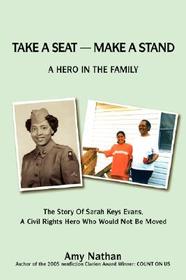 "Amy Nathan tells Sarah’s story dexterously, writing the nonfiction narrative in a very simple yet compelling way that makes the book hard to put down. Sarah’s courage and determination show through in Amy’s writing, and you can easily hear Sarah’s strong spirit speaking. Take A Seat, Make A Stand is an inspiring book of a young woman’s audacity and her act of civil disobedience that changed the way Americans are treated today." Review from New Moon magazine. " Nathan strikes just the right balance of emotion and facts necessary to reach children within the context of a history lesson. As a result, this thin volume would be a good choice for elementary classrooms as part of a Civil Rights unit. A winner. " Kirkus review. MLA 8 Citation
Nathan, Amy. "Sarah Keys: An Early Pioneer for Justice." Nonfiction Minute, iNK Think Tank, 15 Feb. 2018, www.nonfictionminute.org/the-nonfiction-minute/ Sarah-keys-an-early-pioneer-for-justice. 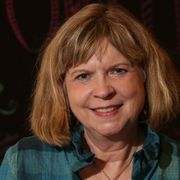 Dr. Percy Julian was my neighbor in Oak Park, Illinois. I didn’t know the family who lived in the pretty home surrounded by an iron fence. But I heard the story, that the house was firebombed after they had bought it back in 1951. The Julian's were African-Americans coming to a white community. Later I learned more. Dr. Julian was someone who didn’t take no for an answer. He grew up in the segregated South going to black-only schools. He hoped to study plant chemistry, but no southern college would accept a Negro, so he moved on. He went to DePauw University in Indiana and helped pay tuition by waiting tables at a white fraternity. He graduated at the top of his class in 1920 and wanted to get his doctorate at Harvard. Harvard refused, because that would mean Julian could teach whites—and that was not allowed. Julian moved on. He went to Austria to earn his doctorate, and in that lab he studied chemicals in plants, especially beans. Many excellent medicines came from plant chemicals, but extracting them was often costly. Upon returning to DePauw to teach, Julian was able to synthesize a plant chemical called physostigmine. His discovery produced inexpensive medicine for patients with glaucoma, an eye disease causing blindness. But the Great Depression fell across America, and DePauw ran out of money to fund his research. Julian moved on. A Chicago paint company hired Julian as the first African-American to head a research lab in American industry. Julian had to travel for his work, and motels refused him a bed. One year he slept in his car 32 times, sometimes in the dead of winter. Julian and his coworkers developed inks and paper coatings, dog food and a product called Aero-Foam to extinguish fires on aircraft carriers. His team discovered many uses for soybeans, at that time viewed as food for cows and pigs. Most important, they synthesized “Substance S” from soybeans. This synthetic drug replaced wildly-expensive cortisone. Julian’s landmark achievement offered relief to kids suffering from the painful and disfiguring disease rheumatoid arthritis. Percy Julian worked all his days, always moving on to make life better. He built his own research business, volunteered at church, played the piano, and loved his family. He became a quiet hero to many, including me. I’m writing a book about Dr. Julian, which I hope you’ll see in print. For now, visit this site. 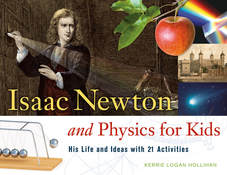 Kerrie Hollihan has already written about one great scientist, Sir Isaac Newton. You can read more about this book here. Kerrie Hollihan is a member of iNK's Authors on Call and is available for classroom programs through Field Trip Zoom, a terrific technology that requires only a computer, wifi, and a webcam. Click here to find out more. MLA 8 Citation
Hollihan, Kerrie Logan. "Dr Percy Julian: Forgotten Genius." Nonfiction Minute, iNK Think Tank, 13 Feb. 2018, www.nonfictionminute.org/ the-nonfiction-minute/dr-Percy-Julian-Forgotten-Genius.  In 1963, at a ceremony in Washington, D.C., President Lyndon Johnson awarded singer Marian Anderson the Presidential Medal of Freedom, the highest honor a president can give to a civilian (someone not in the military). He explained why this African American musician was being honored: “Artist and citizen, she has ennobled her race and her country, while her voice has enthralled the world.” Twenty-four years earlier, however, some in Washington weren’t interested in honoring her but instead treated her unfairly. By then, she had given wonderful concerts of classical music in Europe and the United States, including at the White House. But in 1939, when a local university tried to have her perform at Constitution Hall, Washington’s concert hall, the managers of Constitution Hall wouldn’t let her, just because of the color of her skin. Eleanor Roosevelt, President Franklin Roosevelt’s wife, was upset by this example of discrimination against African Americans and arranged for Marian Anderson to perform that spring at the Lincoln Memorial. More than 75,000 people filled the area in front of the memorial to hear Marian Anderson sing. Thousands more around the country listened on radio to a live broadcast of the performance. She started by singing “America,” then sang some classical pieces, and ended with spirituals, including “Nobody Knows the Trouble I’ve Seen.” Newspapers and magazines wrote rave reviews, which let thousands more people learn about the dignified and courageous way she had triumphed over discrimination. Four years later, in 1943, she was at last invited to perform at Constitution Hall. Did this end unfair treatment for this singer? Not exactly. In 1953, Marian Anderson was again denied permission to perform at a concert hall, this time by the Lyric Theater in Baltimore, Maryland. Luckily, this city’s music- and freedom-loving citizens came to her defense. Some wrote letters to newspapers complaining about “this insult to a great American singer.” Others threatened never to go to that concert hall again. Hundreds complained directly to the Lyric’s managers. Finally, Maryland’s commission on interracial relations persuaded the Lyric’s owners to let Marion Anderson perform there on January 8, 1954. The hall was filled to overflowing with her enthusiastic fans. Ten years later, racial discrimination in concert halls finally became illegal. The Civil Rights Act of 1964 outlawed discrimination based on race, religion, or national origin at any place that serves the public, including concert halls, theaters, stadiums, restaurants, hotels, and anywhere else. Source notes for this Minute may be found be clicking here. 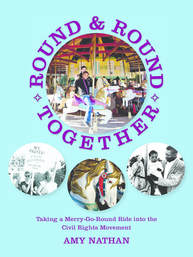 Amy Nathan is the author of Round and Round Together: Taking a Merry-Go-Round Ride into the Civil Rights Movement, which tells about many little-known and yet important stories in civil rights history, including the story of Marian Anderson being the first African American to perform at Baltimore’s Lyric Theater in January 1954, and also the story about the merry-go-round that’s located not far from where Marian Anderson gave her famous 1939 concert at the Lincoln Memorial in Washington. For more information, click here. MLA 8 Citation
Nathan, Amy. "Marian Anderson: A Singer’s Victory." Nonfiction Minute, iNK Think Tank, 27 Feb. 2018, www.nonfictionminute.org/the-nonfiction-minute/ marian-anderson-a-singers-victory. Why is Black History Month celebrated in February? The answer is really quite love-ly. For Black people enslaved, a birthday was as hard to come by as justice. But, never one to be outdone by the “impossible,” Frederick Bailey wanted a birthday—and a birthday he was going to have. First, he'd have to find out when it was. He’d heard that his father was the slave owner from whom he'd escaped, so he couldn't ask him. His mother, Harriet Bailey, had been sold away from him when he was only five, so he couldn't ask her. But, he could remember stories she'd told him before they’d been separated. She said he was born on a Maryland plantation in the ‘teens. He chose the mid-teens, 1818, for his birth year. She always called him her “little valentine.” He chose Valentine’s Day for his birth date. With that, Frederick finally had the birthday he'd always wanted: February 14, 1818. Then . . . In 1926, Dr. Carter G. Woodson wanted to solve a problem. For centuries, Americans were taught to believe that African Americans had “no history or culture.” Now that is, of course, impossible. Everyone inherits the history and culture of their family elders. But, this horrific idea was used to justify slavery and segregation by making Black people seem less than human. Dr. Woodson had a better idea: he’d tell the truth. He would research and share the true history of Black people in countries throughout the world over. To promote his idea, he created Negro History Week (now, Black History Month). He chose February in honor of two birthdays. Born on February 12, 1809, Abraham Lincoln was the first American president to take action to end slavery. Born on February 14, 1818 Harriet Bailey’s “little Valentine's” became the noted Underground Railroad conductor, abolitionist, and publisher, Frederick Douglass. As a special adviser to President Lincoln, he proposed—and the president wrote and signed—the “Emancipation Proclamation”; ending slavery. Such is the power of love. We never know how we will remember what our parents say or what their words will mean to us when we need them most. Frederick's mother—an enslaved woman with so little to give—empowered her son for life with the gift of her enduring love. For this love-ly reason, February is Black History Month. Frederick Bailey's mother was sold to a new owner, leaving the 5-year-old behind. This was a common practice in the slavery era. Abraham Lincoln's successful campaign to end slavery in the United States culminated in the Emancipation Declaration of 1863. Alexander Gardner via Wikimedia Commons ;In 1926, Carter G. Woodson (left) shown here as a young man, pioneered the celebration of "Negro History Week" during the second week in February, to coincide with marking the birthdays of Abraham Lincoln (above) and Frederick Douglass (right). Black United Students and Black educators at Kent State University expanded the celebration to become Black History Month on February 1, 1970. Woodson Courtesy of the New River Gorge National River website, National Park Service, Department of the Interior, United States Government; Douglass via Wikimedia Commons. 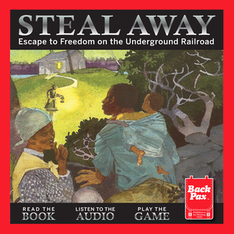 Janus Adams has produced Steal Away-- a package of a book, an audio and a game about the Underground Railroad. You can learn more about her award-winning series of adventure and travel books, audios and games on her website called Back Pax Kids. MLA 8 Citation
Adams, Janus. "Title tbd." Nonfiction Minute, iNK Think Tank, 28 Feb. 2018, www.nonfictionminute.org/the-nonfiction-minute/ why-is-february-black-history-month. |
*NEWS
|
For Vicki Cobb's BLOG (nonfiction book reviews, info on education, more), click here: Vicki's Blog
The NCSS-CBC Notable Social Studies Committee is pleased to inform you
that 30 People Who Changed the World has been selected for Notable Social Studies Trade Books for Young People 2018, a cooperative project of the National Council for the Social Studies (NCSS) & the Children’s Book Council
Categories
All
Abolitionists
Adams Janus
Adaptation
Adaptations
Adkins Jan
Advertising
Aerodynamics
Africa
African American History
African Americans
Africa West
Agriculture
Aircraft
Air Pilots
Air Pressure
Air Travel
Albee Sarah
Alchemy
Alligators
Allusion
American History
American Icons
Amphibians
Amundsen Roald
Anatomy
Ancient
Ancient Cultures
Anderson Marian 1897-1993
Animal Behavior
Animal Experimentation
Animal Intelligence
Animals
Animation
Antarctica
Ants
Apache Indians
Apes
April Fool's Day
Architecture
Argument
Arithmetic
Art
Art Deco
Artists
Arts
Asia
Astronauts
Astronomy
Athletes
Atomic Theory
Audubon Societies
Authors
Autobiography
Automobiles
Aviation
Awards
Bacteria
Baseball
Battuta Ibn
Bears
Beatles
Beavers
Bees
Biodegradation
Biography
Biology
Biomes
Biomimicry
Biplanes
Birds
Black Death
Black History
Blindness
Blizzards
Bombs
Bonaparte Napoleon
Boone Daniel
Botany
Brazil
Bridges
Brill Marlene Targ
Brooklyn Bridge
Brown John
Buffaloes
Building Materials
Butterflies
Caesar
Caesar Julius
Caissons
Calculus
Calendars
Cannibal
Capitals
Caravaggio
Carbon Dioxide
Carnivores
Carson Mary Kay
Cartoons & Comics
Carving (Decorative Arts)
Cascade Range
Castaldo Nancy
Castles
Castrovilla Selene
Cathedrals
Cats
Caves
Celts
Cemeteries
Chemistry
Children's Authors
Child Welfare
China
Choctaw Indians
Christmas
Chronometers
Cicadas
Cinco De Mayo
Ciphers
Circle
Citizenship
Civil Rights
Civil Rights Movements
Civil War
Civil War - US
Climate
Climate Change
Clocks And Watches
Clouds
Cobb Vicki
COBOL (Computer Language)
Code And Cipher Stories
Collard III Sneed B.
Collectors And Collecting
Color
Commerce
Communication
Competition
Compilers
Composers
Computers
Congressional Gold Medal
Consitution
Contests
Contraltos
Coolidge Calvin
Cooling
Corms
Corn
Counterfeiters
Covid-19
Crocodiles
Cryptography
Culture
Darwin Charles
Declaration Of Independence
Decomposition
Decompression Sickness
Deep-sea Animals
Deer
De Medici Catherine
Design
Detectives
Dickens Charles
Disasters
Discrimination
Diseases
Disney Walt
DNA
Dogs
Dollar
Dolphins
Douglass Frederick 1818-1895
Droughts
Dr. Suess
Dunphy Madeleine
Ear
Earth
Earthquakes
Ecology
Economics
Ecosystem
Edison Thomas A
Education
Egypt
Eiffel-gustave-18321923
Eiffel-tower
Einstein-albert
Elephants
Elk
Emancipationproclamation
Endangered Species
Endangered-species
Energy
Engineering
England
Englishlanguage-arts
Entomology
Environmental-protection
Environmental-science
Equinox
Erie-canal
Etymology
Europe
European-history
Evolution
Experiments
Explorers
Explosions
Exports
Extinction
Extinction-biology
Eye
Fairs
Fawkes-guy
Federalgovernment
Film
Fires
Fishes
Flight
Floods
Flowers
Flute
Food
Food-chains
Foodpreservation
Foodsupply
Food-supply
Football
Forceandenergy
Force-and-energy
Forensicscienceandmedicine
Forensic Science And Medicine
Fossils
Foundlings
France
Francoprussian-war
Freedom
Freedomofspeech
French-revolution
Friction
Frogs
Frontier
Frontier-and-pioneer-life
Frozenfoods
Fugitiveslaves
Fultonrobert
Galapagos-islands
Galleys
Gametheory
Gaudi-antoni-18521926
Gender
Generals
Genes
Genetics
Geography
Geology
Geometry
Geysers
Ghosts
Giraffe
Glaciers
Glaucoma
Gliders-aeronautics
Global-warming
Gods-goddesses
Gold-mines-and-mining
Government
Grant-ulysses-s
Grasshoppers
Gravity
Great-britain
Great-depression
Greece
Greek-letters
Greenberg Jan
Hair
Halloween
Handel-george-frederic
Harness Cheryl
Harrison-john-16931776
Health-wellness
Hearing
Hearing-aids
Hearst-william-randolph
Henry-iv-king-of-england
Herbivores
Hip Hop
History
History-19th-century
History-france
History-world
Hitler-adolph
Hoaxes
Holidays
Hollihan Kerrie Logan
Homestead-law
Hopper-grace
Horses
Hot Air Balloons
Hot-air-balloons
Housing
Huguenots
Human Body
Hurricanes
Ice
Icebergs
Illustration
Imagery
Imhotep
Imperialism
Indian-code-talkers
Indonesia
Industrialization
Industrial-revolution
Inquisition
Insects
Insulation
Intelligence
Interstatecommerce
Interviewing
Inventions
Inventors
Irrational-numbers
Irrigation
Islands
Jacksonandrew
Jazz
Jeffersonthomas
Jefferson-thomas
Jemisonmae
Jenkins-steve
Jet-stream
Johnsonlyndonb
Jokes
Journalism
Keeling-charles-d
Kennedyjohnf
Kenya
Kidnapping
Kingmartinlutherjr19291968
Kingmartinlutherjr19291968d6528702d6
Kings-and-rulers
Kings Queens
Kings-queens
Koala
Labor
Labor Policy
Lafayette Marie Joseph Paul Yves Roch Gilbert Du Motier Marquis De 17571834
Landscapes
Languages-and-culture
Law-enforcement
Layfayette
Levers
Levinson Cynthia
Lewis And Clark Expedition (1804-1806)
Lewis Edmonia
Liberty
Lift (Aerodynamics)
Light
Lindbergh Charles
Liszt Franz
Literary Devices
Literature
Lizards
Longitude
Louis XIV King Of France
Lumber
Lunar Calendar
Lynching
Macaws
Madison-dolley
Madison-james
Madison-james
Mammals
Maneta-norman
Maneta-norman
Marathon-greece
Marine-biology
Marine-biology
Marines
Marsupials
Martial-arts
Marx-trish
Mass
Massachusetts-maritime-academy
Mass-media
Mastodons
Mathematics
May-day
Mcclafferty-carla-killough
Mcclafferty-carla-killough
Mckinley-william
Measurement
Mechanics
Media-literacy
Media-literacy
Medicine
Memoir
Memorial-day
Metaphor
Meteorology
Mexico
Mickey-mouse
Microscopy
Middle-west
Migration
Military
Miners
Mississippi
Molasses
Monarchy
Monsters
Montgomery
Montgomery-bus-boycott-19551956
Montgomery-heather-l
Monuments
Moon
Moran-thomas
Morsecode
Morsesamuel
Moss-marissa
Moss-marissa
Motion
Motion-pictures
Mummies
Munro-roxie
Munro-roxie
Musclestrength
Museums
Music
Muslims
Mythologygreek
Nanofibers
Nanotechnology
Nathan-amy
Nathan-amy
Nationalfootballleague
Nationalparksandreserves
Nativeamericans
Native-americans
Native-americans
Naturalhistory
Naturalists
Nature
Nauticalcharts
Nauticalinstruments
Navajoindians
Navigation
Navy
Ncaafootball
Nervoussystem
Newdeal19331939
Newman-aline
Newman-aline
Newton-isaac
New-york-city
Nobelprizewinners
Nomads
Nonfictionnarrative
Nutrition
Nylon
Nymphs-insects
Oaths Of Office
Occupations
Ocean
Ocean-liners
Olympics
Omnivores
Optics
Origami
Origin
Orphans
Ottomanempire
Painters
Painting
Paleontology
Pandemic
Paper-airplanes
Parksrosa19132005
Parrots
Passiveresistance
Patent Dorothy Hinshaw
Peerreview
Penguins
Persistence
Personalnarrative
Personification
Pets
Photography
Physics
Pi
Pigeons
Pilots
Pinkertonallan
Pirates
Plague
Plains
Plainsindians
Planets
Plantbreeding
Plants
Plastics
Poaching
Poetry
Poisons
Poland
Police
Political-parties
Pollen
Pollution
Polo-marco
Populism
Portraits
Predation
Predators
Presidentialmedaloffreedom
Presidents
Prey
Prey-predators
Prey-predators
Prime-meridian
Pringle Laurence
Prohibition
Proteins
Protestandsocialmovements
Protestants
Protestsongs
Punishment
Pyramids
Questioning
Radio
Railroad
Rainforests
Rappaport-doreen
Ratio
Reading
Realism
Recipes
Recycling
Refrigerators
Reich-susanna
Religion
Renaissance
Reproduction
Reptiles
Reservoirs
Rheumatoidarthritis
Rhythm-and-blues-music
Rice
Rivers
Roaringtwenties
Roosevelteleanor
Rooseveltfranklind
Roosevelt-franklin-d
Roosevelt-theodore
Running
Russia
Safety
Sanitation
Schwartz David M
Science
Scientificmethod
Scientists
Scottrobert
Sculpture
Sculpturegardens
Sea-level
Seals
Seals-animals
Secretariesofstate
Secretservice
Seeds
Segregation
Segregationineducation
Sensessensation
September11terroristattacks2001
Seuss
Sextant
Shackletonernest
Shawneeindians
Ships
Shortstories
Silkworms
Simple-machines
Singers
Siy Alexandra
Slavery
Smuggling
Snakes
Socialchange
Social-change
Socialjustice
Social-justice
Socialstudies
Social-studies
Social-studies
Sodhouses
Solarsystem
Sound
Southeast-asia
Soybean
Space Travelers
Spain
Speech
Speed
Spiders
Spies
Spiritualssongs
Sports
Sports-history
Sports-science
Spring
Squirrels
Statue-of-liberty
STEM
Storms
Strategy
Sugar
Sumatra
Summer
Superbowl
Surgery
Survival
Swanson-jennifer
Swinburne Stephen R.
Synthetic-drugs
Taiwan
Tardigrada
Tasmania
Tasmanian Devil
Tasmanian-devil
Technology
Tecumsehshawneechief
Telegraph-wireless
Temperature
Tennis
Terrorism
Thomas Peggy
Thompson Laurie Ann
Time
Titanic
Tombs
Tortoises
Towle Sarah
Transcontinental-flights
Transportation
Travel
Trees
Trung Sisters Rebellion
Tundra
Turnips
Turtles
Typhoons
Underground Railroad
Us-environmental-protection-agency
Us History
Us-history
Ushistoryrevolution
Us History Revolution
Us-history-war-of-1812
Us Presidents
Ussupremecourtlandmarkcases
Vacations
Vaccines
Vangoghvincent
Vegetables
Venom
Vietnam
Viruses
Visual-literacy
Volcanoes
Voting-rghts
War
Warne-kate
Warren Andrea
Washington-dc
Washington George
Water
Water-currents
Wax-figures
Weapons
Weather
Weatherford Carole Boston
Whiting Jim
Wildfires
Winds
Windsor-castle
Wolves
Woman In History
Women
Women Airforce Service Pilots
Women-airforce-service-pilots
Womeninhistory
Women In History
Women-in-science
Women's History
Womens-roles-through-history
Wonder
Woodson-carter-godwin-18751950
World-war-i
World War Ii
World-war-ii
Wright Brothers
Writing
Writing-skills
Wwi
Xrays
Yellowstone-national-park
Zaunders Bo
ArchivesMarch 2021
February 2021
January 2021
December 2020
November 2020
October 2020
September 2020
June 2020
May 2020
April 2020
March 2020
February 2020
January 2020
December 2019
October 2019
September 2019
August 2019
July 2019
May 2019
April 2019
March 2019
February 2019
January 2019
December 2018
November 2018
September 2018
June 2018
May 2018
April 2018
March 2018
February 2018
January 2018
December 2017
November 2017
October 2017
September 2017
March 2017
The NONFICTION MINUTE, Authors on Call, and. the iNK Books & Media Store are divisions of iNK THINK TANK INC.
a 501 (c) (3) nonprofit corporation. To return to the iNK Think Tank landing page click the icon or the link below. :
http://inkthinktank.org/
For more information or support, contact thoughts@inkthinktank.org
For Privacy Policy, go to
Privacy Policy
© COPYRIGHT the Nonfiction Minute 2020.
ALL RIGHTS RESERVED.
This site uses cookies to personalize your experience, analyze site usage, and offer tailored promotions. www.youronlinechoices.eu
Remind me later
Archives
March 2023
February 2023
January 2023
December 2022
November 2022
October 2022
September 2022
June 2022
May 2022
April 2022
March 2022
February 2022
January 2022
December 2021
November 2021
September 2021
April 2021
March 2021
February 2021
November 2020
October 2020
September 2020
June 2020
May 2020
April 2020
March 2020
February 2020
January 2020
October 2019
August 2019
July 2019
May 2019
April 2019
December 2018
September 2018
June 2018
May 2018
March 2018
February 2018
January 2018
December 2017
November 2017
October 2017
September 2017

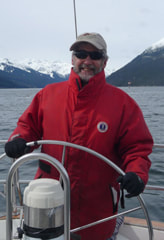

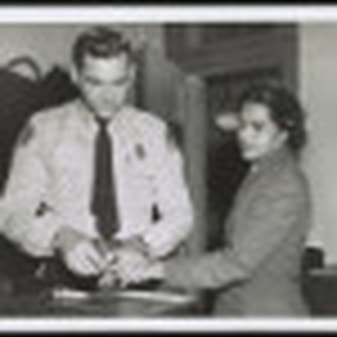
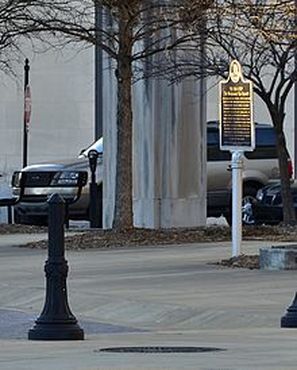
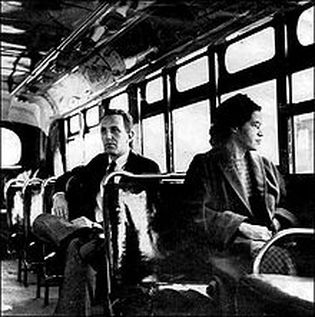
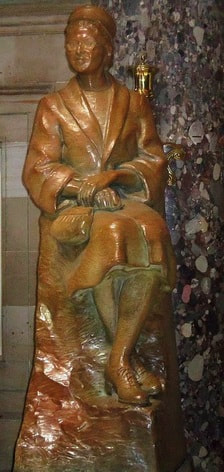


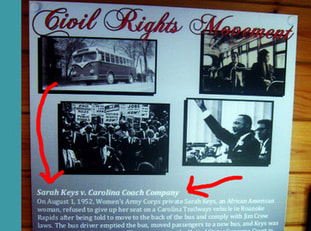
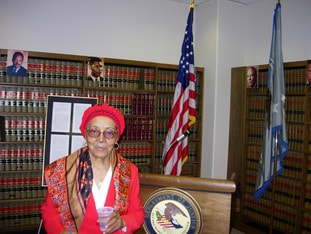


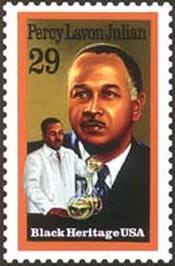


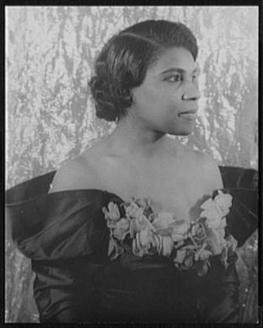
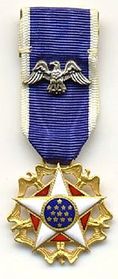
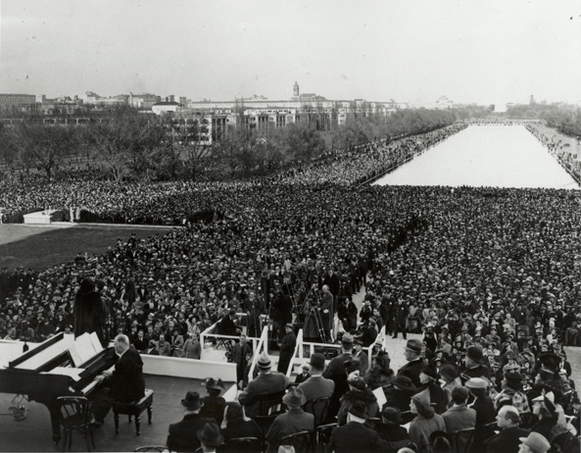
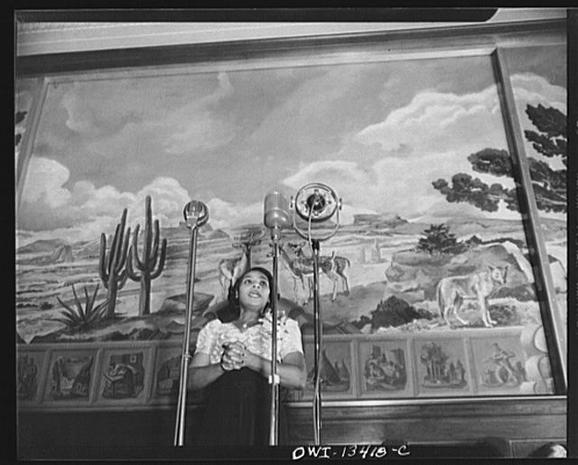

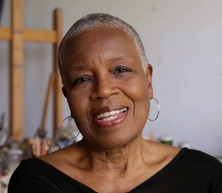

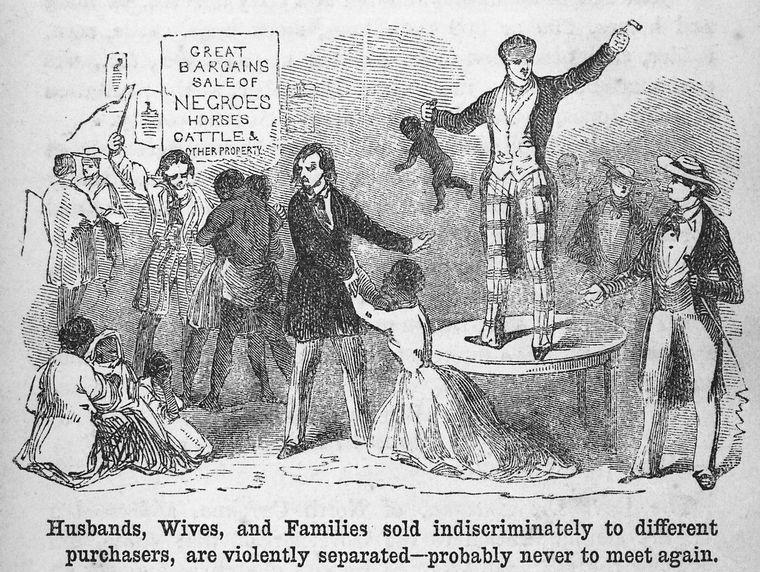





 RSS Feed
RSS Feed
